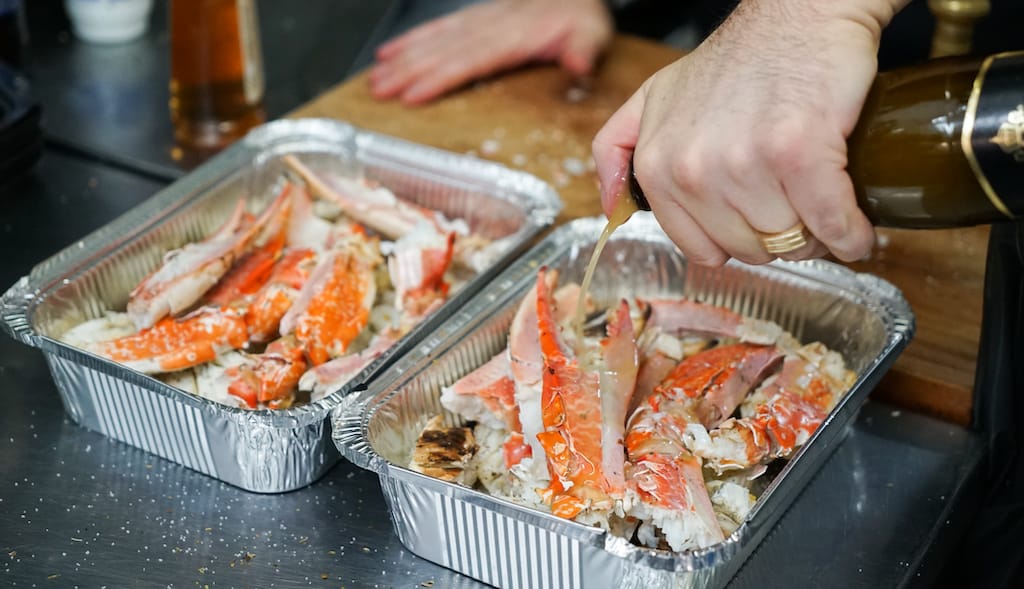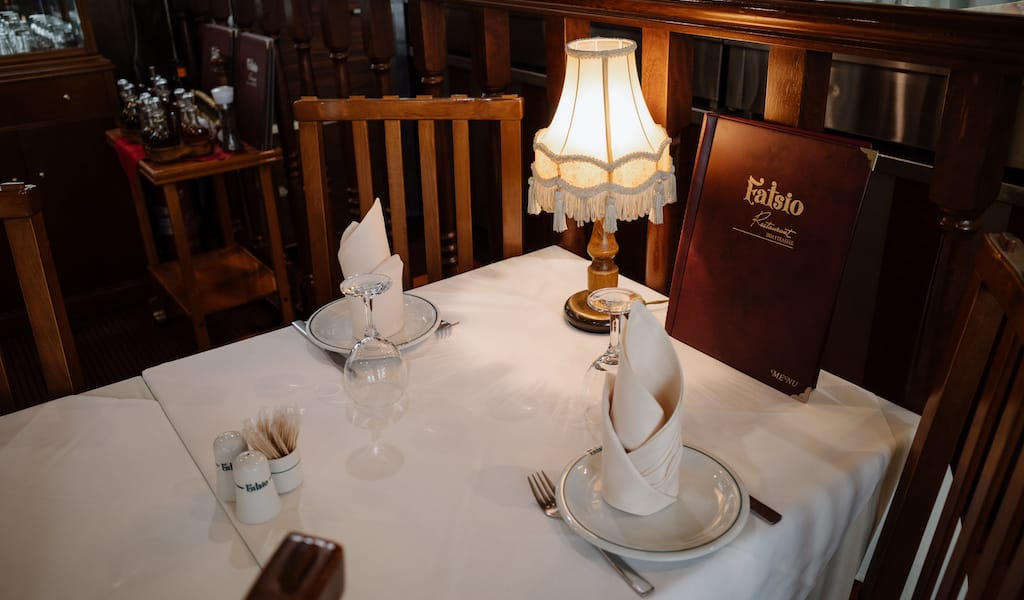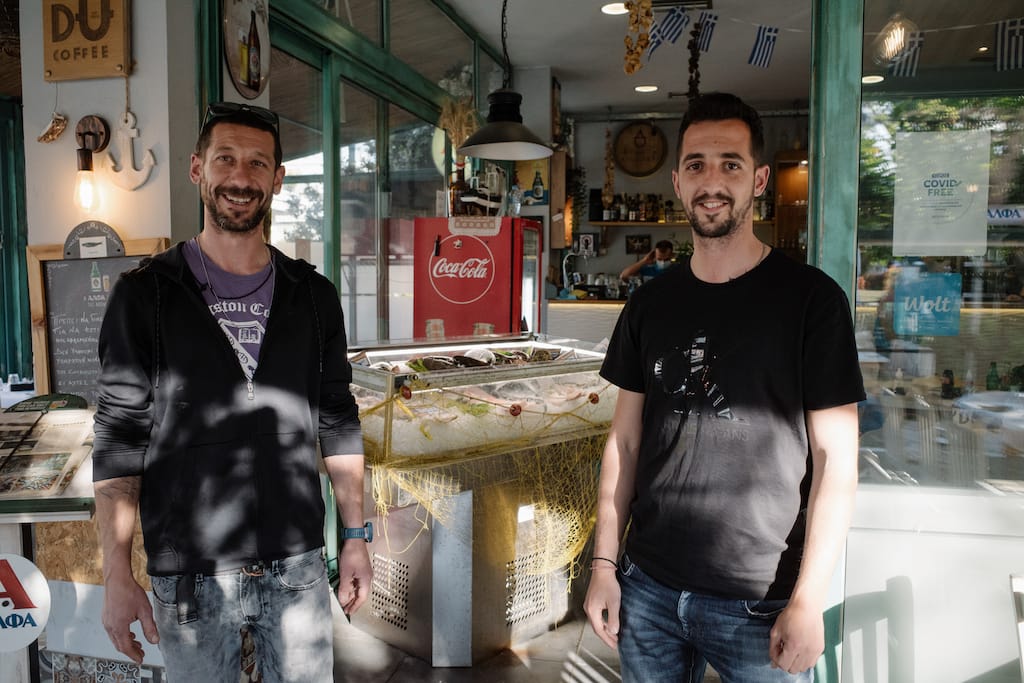Whoever came up with the expression “I don’t give a fig” had obviously never tasted a Greek fig fresh off the tree.
How figs, almost certainly dried, came to be considered common and worthless in late medieval England is a mystery, but for the Greeks, they have always been something to treasure and preserve, to be enjoyed in all seasons.
As the Bible tells us, figs have been around since the very beginning. After taking bites out of the forbidden fruit, possibly an apple, Adam and Eve suddenly acquired the knowledge that they were naked and covered themselves with the leaves of the fig tree. Archaeologists confirm that figs were among the first fruits to be preserved, too, with seeds found in sites dating back to the 5th millennium BCE. And, like the pomegranate, because of those many seeds, Greek figs came to be symbols of wealth and fertility.
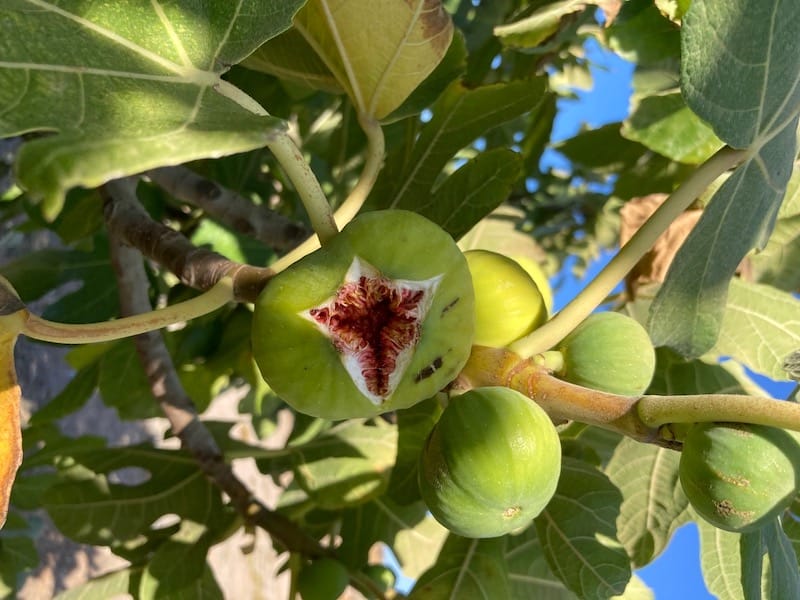
Figs originated in Western Asia and spread around the Mediterranean Basin, but Greek figs have somehow held onto their reputation as the tastiest of all, California Mission figs included. They do especially well in Greece’s harsh, dry, hot climate and in some places are almost as ubiquitous as the olive, growing wild by the roadside or in inhospitable places, even sandy beaches. For the ancient Greeks, figs were such a prized commodity that Solon (639-559 BCE), who ruled Attica, passed a law forbidding their export. All figs must remain for domestic consumption, and stealing them was a serious crime. From this edict the word sycophant, originally meaning “fig-displayer,” seems to have emerged, as tattletales sought to win a reward for pointing out the thief. In modern Greek, the word still means slanderer, though in English it means bootlicker.
When I was growing up on the East Coast of the U.S., my only contact with figs was in the dubious form of the Fig Newton cookie served to us sometimes during recess. I hated them. It wasn’t until I went to Greece in the mid-sixties that I discovered the bliss of feasting on freshly picked figs from the tree in my new family’s island garden, or stealing them on the way to the beach. I was reprimanded on occasion, but not fined or imprisoned. Although I had vacationed in Spain and Italy before that, I have no recollection of their figs.
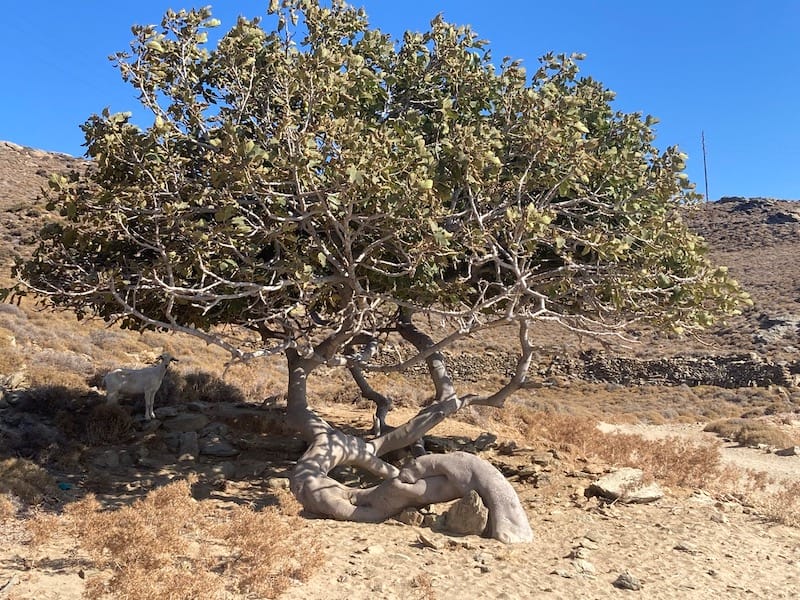
Attica still boasts excellent figs, and in the area around Markopoulo, close to Athens’s Venizelos Airport, you will find impromptu stands piled high with them. And well into the 1970s, you would hear the cry of the street vendor, “Syka, krya syka” (Figs, cold figs), in the mornings, as he walked through the posh district of Kolonaki with his basket. Interestingly, the figs were cool even though they were not sitting on ice. There are dozens of varieties, ranging from almost black to very pale green, but the favorites are the purpley Basilika or “royal” figs, and the green ones with red insides.
Amazingly, for something that is so naturally sweet, figs are also extremely nutritious. They contain all sorts of minerals – iron, potassium, calcium, magnesium – dietary fibers, and vitamins A, B1 and B2. Figs possess antioxidants and, if you needed more inducements to gobble them, they are also touted as aphrodisiacs.
But figs do have a serious drawback. Their season is short, lasting about six weeks in August and September, and the trees are usually so prolific, it’s impossible to eat them all. So the Greeks, ever resourceful, have found numerous ways of preserving figs and are inventing still more. Most famous, of course, are the simple dried figs, sold loose in farmers’ markets year-round or in packets in shops. These hail primarily from Kalamata in the southern Peloponnese and the island of Evia, Kymi in the middle of its east coast and the north. They are made from light green figs and turn pale beige when dried.
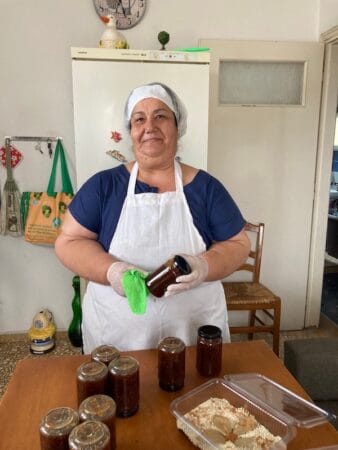
Until a couple of decades ago, I used to see figs strewn out to bake in the sun on the flat roofs of houses on the island of Andros, where I spend part of the year. Nowadays, most people use dehumidifiers or low ovens, but one woman on the island still dries hundreds of figs on her terrace and turns the fruit into jams, spoon sweets, pastellaries (figs stuffed with chopped walnuts, sesame seeds and cinnamon), and something I’d never encountered before, pasteli – typically a kind of brittle made with sesame seeds and honey or almonds. She sells all her produce – an astounding array of pickles, jams, olives, baked sweets, liqueurs, pasta, trahana, and even cheeses from her family’s goats – in a tiny shop in Batsi.
To find out more, I visited Maria Lypirou Syrigou at her home, where we had planned to make pasteli together. Alas, uncharacteristically damp, rainy weather kept the figs from drying, so we resigned ourselves to talking about figs instead. Her season starts well before the late summer, with spoon sweets made from hard, green, inedible figs that appear in the spring. They have no seeds and are ineffably light inside. When I mention that this sweet is notoriously complicated to make, she replies, “Nothing is difficult; all you need is the will, the desire to do it.”
By the time August rolls around, Maria has already dealt with artichokes, capers and rose petals, and even gathered her own saffron from the spring crocuses. But her enthusiasm isn’t dampened and when I enter her kitchen, the table is adorned with jars of still-warm fig jam and a few small trays of pasteli about an inch thick. This requires kneading the figs to a puree with her hands, sprinkling with sesame seeds, and baking three times in a low oven, topped with a quartet of bay leaves to prevent it from going moldy.
Maria is passionate and tireless. The figs she’s had drying on the terrace will be turned into pastellaries, which I have also seen on Chios and Lesvos, and probably are found on many other islands. Making them is a slow process, too, and even involves washing the split figs with sea water after they’ve been sun-dried. “You can’t imagine how this adds to the flavor, and they are always sprinkled with cinnamon, too. Cinnamon and figs are a marriage,” she says.

Surprisingly, though, she has not heard of sykomaida, a kind of sun-dried patty made from figs kneaded with ouzo, chopped walnuts, black pepper, and fennel seed, which I first encountered in Corfu. They made an intriguing packet, wrapped in walnut leaves, and will keep all winter (if you ration them carefully).
Still other Greeks stuff figs into sourdough bread, fold them into desserts similar to banana bread or carrot cake, toss them into salads, and even turn them into chutney, though that is hardly traditional. No doubt there are even more concoctions to be perfected, ice cream perhaps, and of course, there will always be the Christmas figgy pudding of the Brits.
Another good thing about this nutritious, divine fruit is that dried figs are in no danger of becoming scarce, so do order some – they are widely exported – and keep them handy for a snack. A fig a day could keep the doctor away.
You can find Maria Lipirou-Sirigou, Fouskothalassies Traditional Products of Andros, Batsi, Andros, next to Stamati’s taverna. Tel. +30 6984155264.
Published on September 12, 2022
Related stories
August 25, 2022
Athens | By Katherine Whittaker
AthensNikea, known before 1940 as Kokkinia (sometimes, you’ll still hear this old name used), is an area that feels almost like a different city, perhaps even a bigger village on an island. When you come out of the metro, the road is dotted with houses instead of higher-rise apartment buildings, and it is mostly quiet,…
August 16, 2022
AthensThe brown wooden door at Fatsio looks like the entry to an old house, but two small signs give a clue as to what’s inside. The first reads, “Restaurant Fatsio – Manager Georgios Fatsios, Established 1948 Constantinople by Constantinos Fatsios” and below the hours are listed simply: “Daily from 11am until 6pm”. Inside are velvet…
June 3, 2022
AthensNeo Psychiko, a suburb north of central Athens, is just a 15-minute drive from the city’s busy Syntagma central square yet feels like a world away. Residential and family-oriented, the area is greener and quieter than downtown. At its heart is Plateia Eleftherias (“Freedom Square”), a lively spot with a playground, a kiosk, cafes and…















































